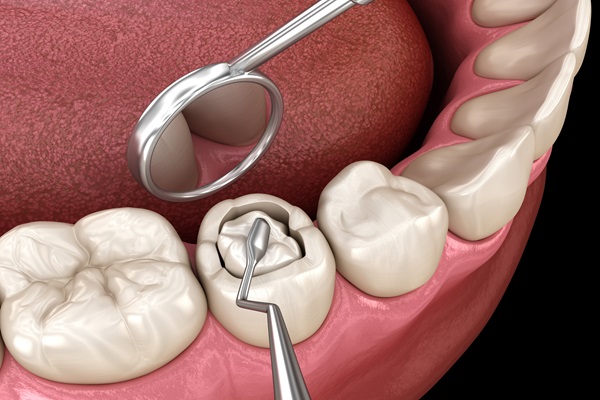Step-by-step Guide to Dental Fillings

General dentists have used fillings to treat cavities and tooth decay for decades. This dental restoration remains an effective treatment today for different oral issues. If you are suffering a toothache, there is a good chance you have a cavity. The dentist can provide relief by cleaning out the decay or infection and filling it with composite resin.
Before you go in for this procedure, you may have some nervousness and anxiety. Although there can be some soreness, you can manage it. It can be helpful to understand what the dentist will do and why this procedure is used.
What leads to this procedure?
Many patients come to the dental office complaining of a toothache. Cavities and tooth decay are common among people of all ages. Even good oral hygiene cannot prevent all of the dental problems that could arise in every situation. People who do not brush or floss regularly are prone to getting cavities or having an infection in the tooth or roots. Also, people who do not visit their family dentist at least every six months may develop dental problems over time.
Identifying the issue
Often, a patient knows when there is a cavity in a tooth. Severe tooth pain can indicate a problem. However, sometimes, it takes a dental examination to determine if a cavity is present. At an appointment, the general dentist will examine the patient using dental tools. X-rays will also be taken to see problems in the roots. The dentist will assess the X-rays to spot cavities or infections.
Preparing the tooth for fillings
If the dentist finds a cavity, treatment may take place at a subsequent appointment. If the issue is serious and causing intense pain, the dentist may perform the procedure immediately. The dentist will begin by using a local anesthetic to numb the patient. This will help reduce pain and make the patient feel at ease.
Next steps
Once the mouth is numb, the dentist will drill into the tooth and remove the decay. The dentist will then clean out the cavity of any bacteria or other materials. The dentist will next insert the composite resin into the tooth in layers. Then the dentist will cure the composite until it hardens. Once it is ready, the dentist will polish it.
Make it last
Composite is more durable than silver, but patients still need to take good care of the restored tooth. Patients should brush twice a day and avoid hard and sticky foods. If the person notices cracks in the restored tooth, or if the composite falls out, this merits a call to the dentist. The fillings should last more than 10 years.
Enjoy relief
Pain from cavities can be severe. Getting dental fillings can remove this discomfort. You can have peace of mind to know that this intervention is effective and will protect the tooth from further damage. Call your dentist today if you suspect you have cavities or other dental issues.
Request an appointment here: https://www.emergencydentistinorlando.com or call Maitland Square Dentistry at (407) 337-1112 for an appointment in our Maitland office.
Check out what others are saying about our services on Yelp: Read our Yelp reviews.
Related Posts
The lifespan of a dental filling is limited. Due to normal wear and tear, a replacement may be necessary. When a filling deteriorates or comes loose, your tooth loses the protection that it has against injury and decay and will be more vulnerable to dangerous bacteria. To avoid more dental issues in the future, you…
A dental crown can save a tooth that is in danger of extraction. Dental crowns serve a dual purpose. They reinforce the tooth structure and improve the appearance of the smile at the same time. This means that a dentist could recommend a crown as a treatment for tooth decay or injury. A cosmetic dentist…
The time and effort that go into fitting a dental crown suggest a permanent restoration. Maybe it is the fact that installing a dental crown often requires multiple dentist visits. It could be the permanence that comes with the removal of enamel before the placement of a crown. Dental crowns that sit on dental implants…
A dental crown is a versatile restoration that can be used to address a wide range of dental issues like a cracked, chipped, decayed, deformed, or broken tooth. The crown covers up the part of the tooth that is visible above the gums, protecting it from further damage and acids made by oral bacteria.The severity…


